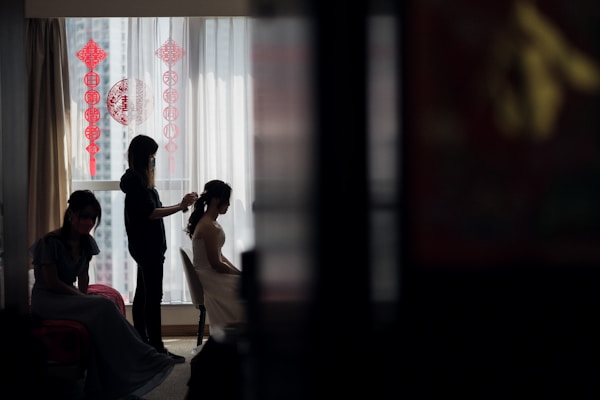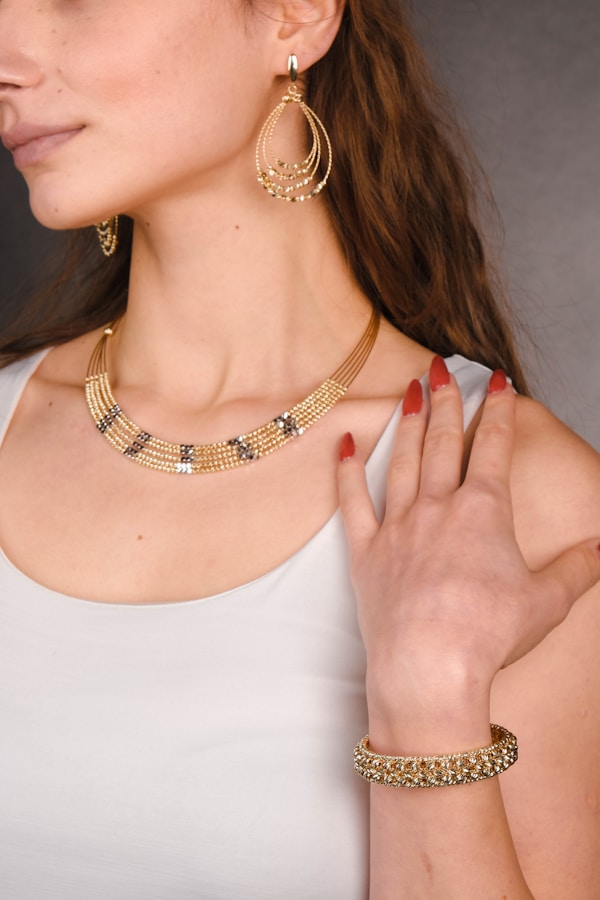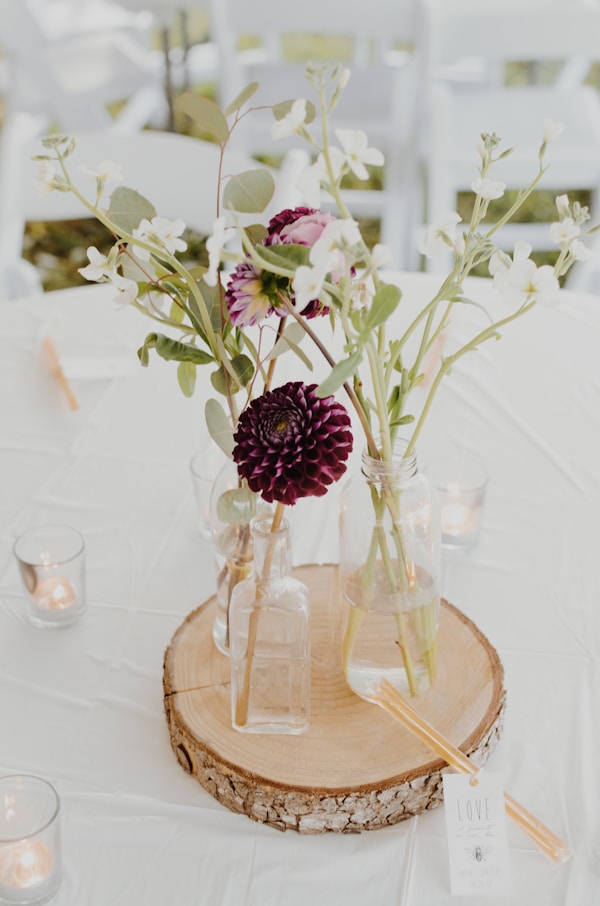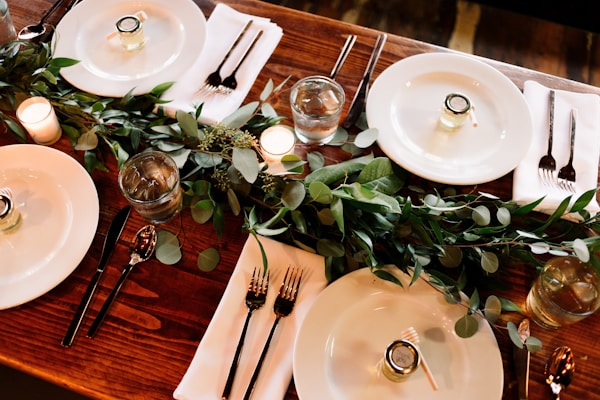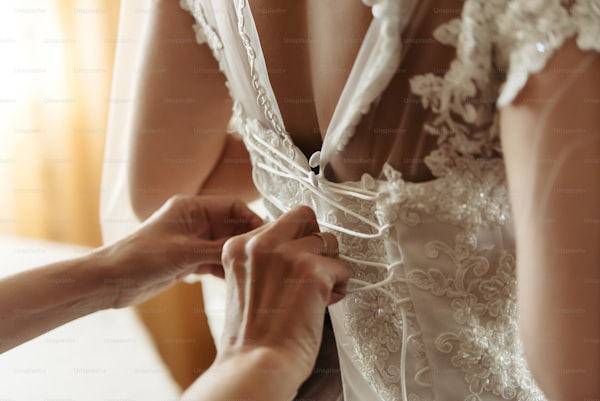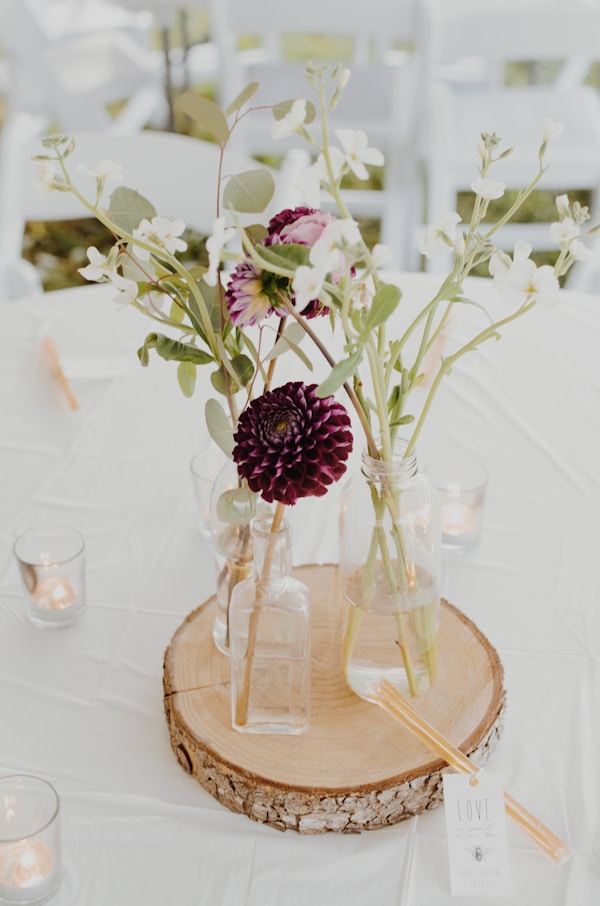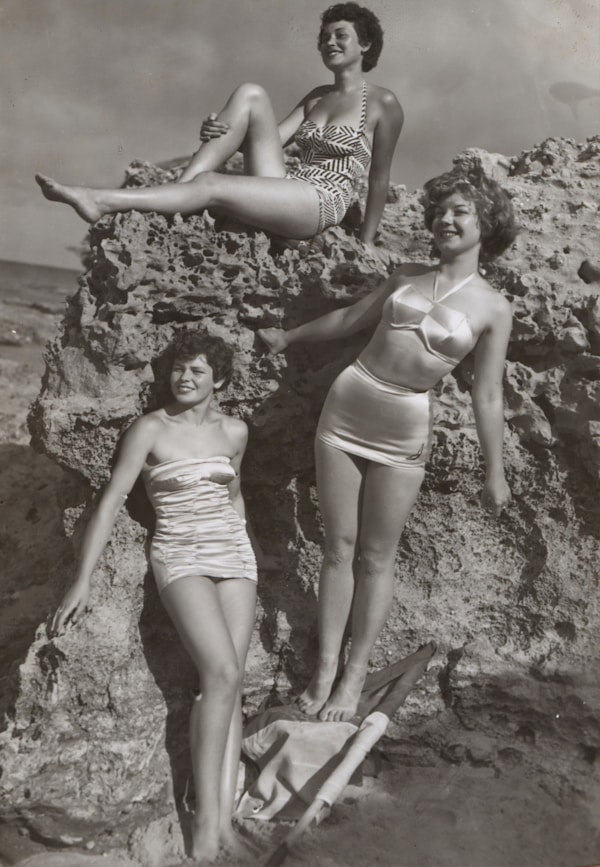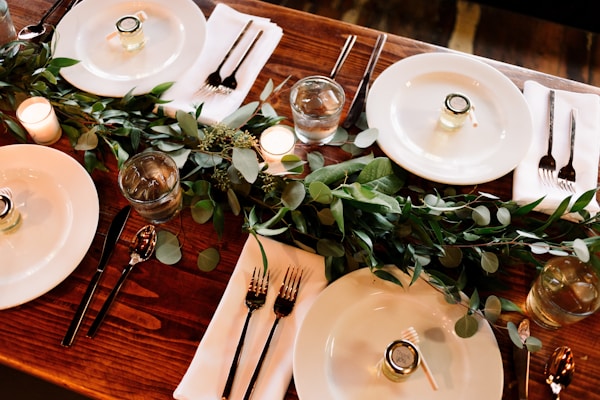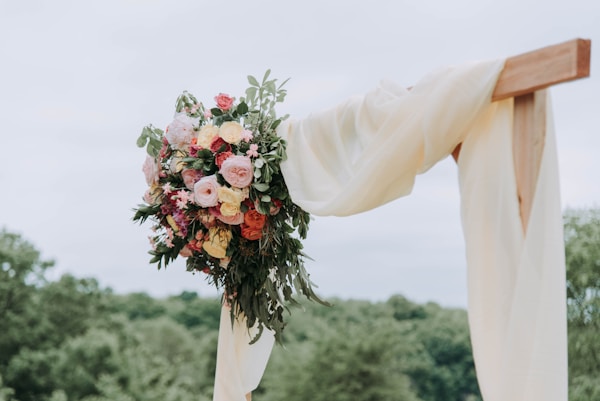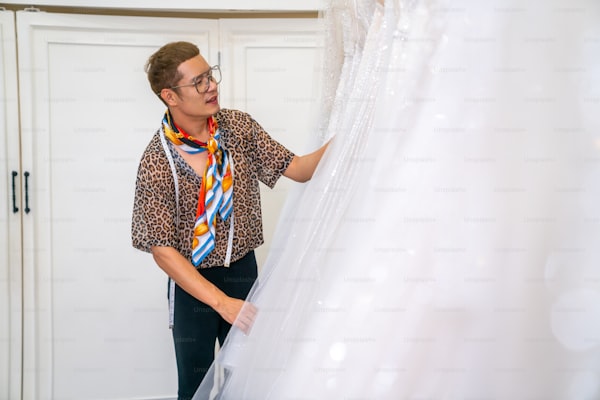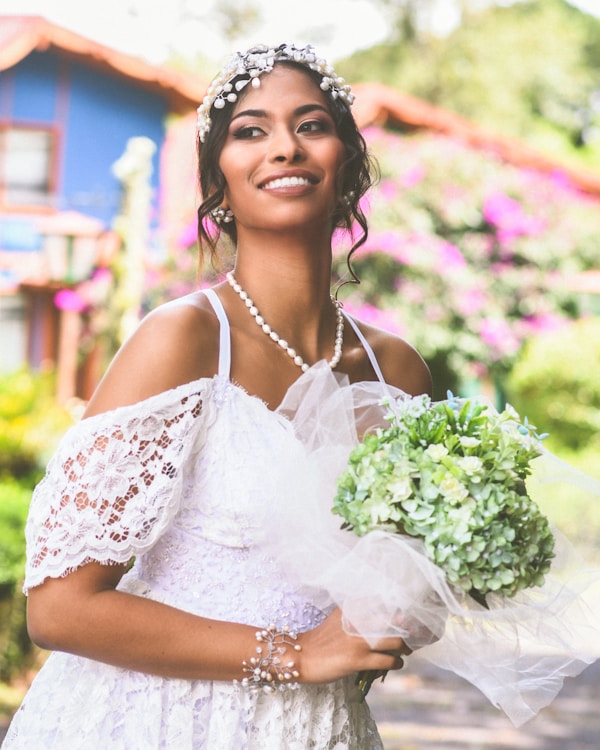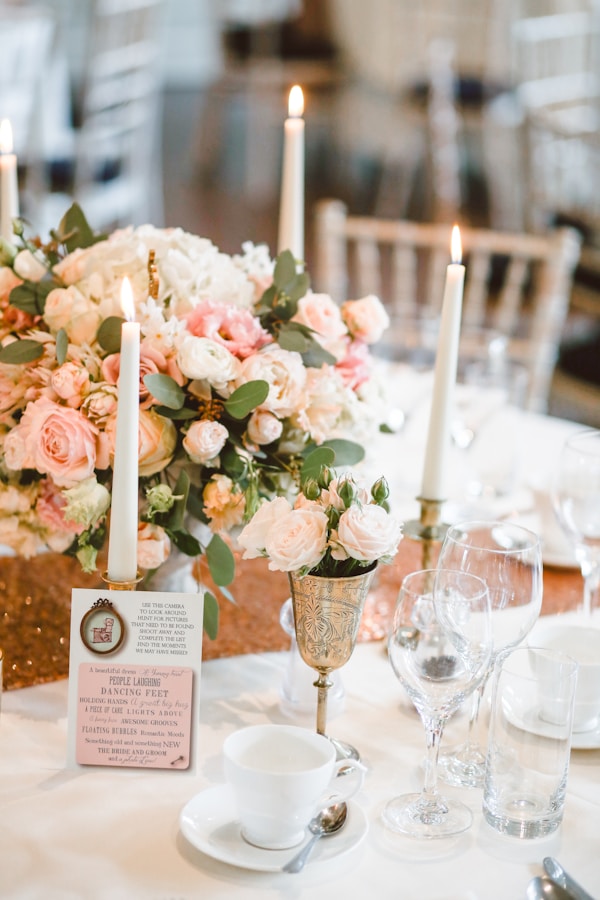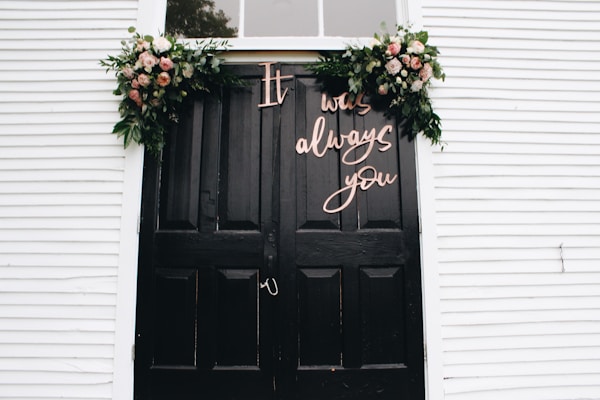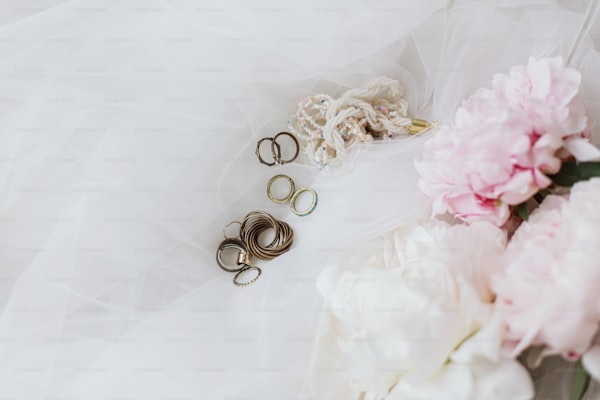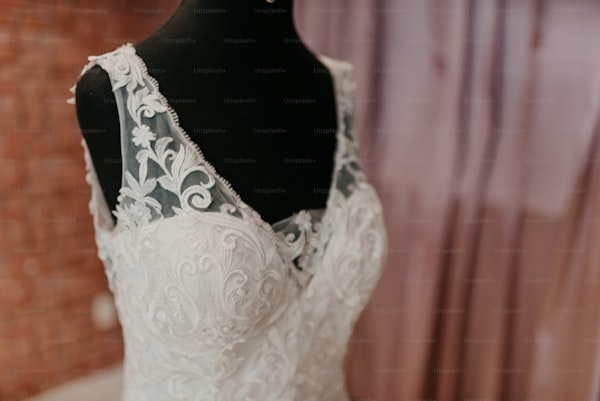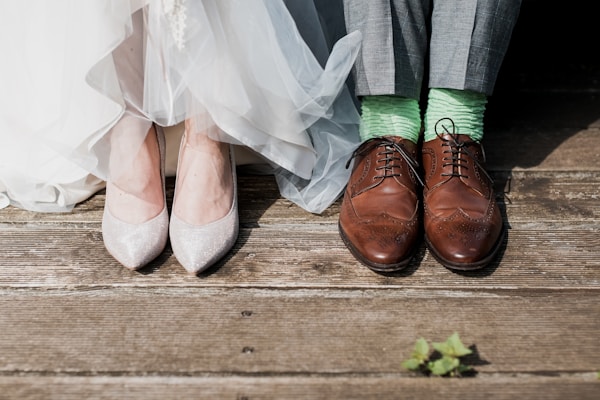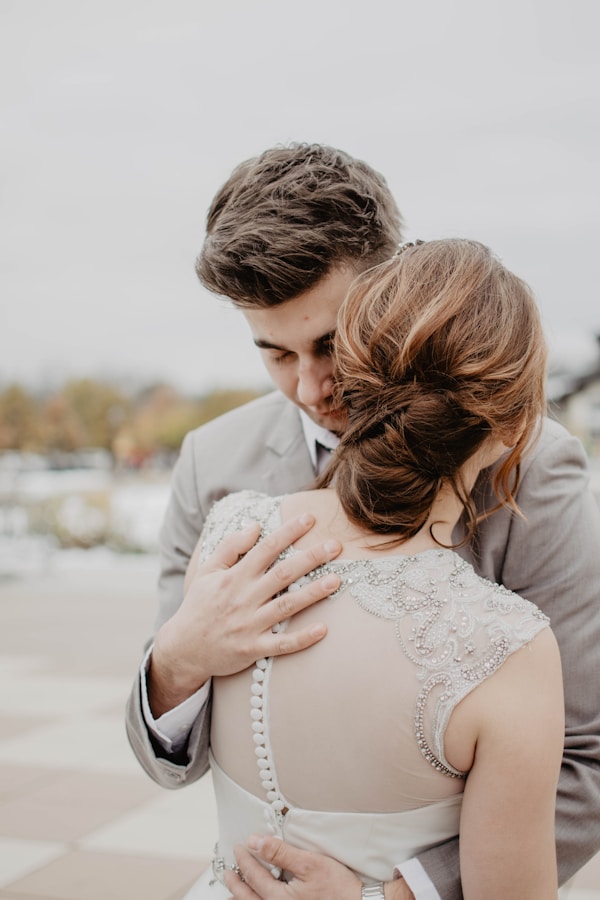What Should I Do If My Wedding Dress Doesn’t Fit on the Wedding Day?
Understanding the Dilemma of a Misfitting Wedding DressEvery bride dreams of a perfect wedding day, where everything goes smoothly and the stunning wedding dress fits like a glove. However, what happens if your wedding dress doesn’t fit on the big day? This common concern can turn excitement into panic, but don’t fret. Below, we provide you with a comprehensive guide on how to handle this situation gracefully.Common Causes of Wedding Dress MisfitBefore delving into solutions, it's crucial to understand why this may occur in the first place. Below are some common reasons:CausesDetailsLast-minute weight changesWhether due to stress or dietary changes, many brides experience fluctuations in weight leading up to their wedding day.Poor fitting during alterationsIf the alterations are not done correctly, they may not offer the intended fit.Size discrepanciesSizes may vary between different bridal shops or designers, resulting in a mismatch.Dress style changesSome dress styles may fit differently due to factors like fabric elasticity and design structure.Initial Steps to TakeIf you find yourself in a situation where your wedding dress doesn’t fit, keep calm. The first thing to do is to assess the situation thoroughly:Take a Deep Breath: Before panicking, spend a moment to breathe and gather your thoughts.Examine the Fit: Identify if the dress is too tight, too loose, or if it just doesn’t sit properly.Check the Time: Depending on the time left before the ceremony, immediate actions ...
Choosing the Perfect Accessories for Your Minimalist Wedding Dress
Your Guide to Accessorizing a Minimalist Wedding DressWhen it comes to bridal fashion, a minimalist wedding dress is often synonymous with elegance, simplicity, and sophistication. However, accessorizing such a gown poses a unique challenge—how do you enhance the beauty of your dress without overshadowing its essence? If you're wondering how do I pick the right accessories for a minimalist wedding dress?, you are not alone. Many brides grapple with this question, striving to strike the perfect balance between enhancing their look and maintaining a clean aesthetic. In this comprehensive guide, we will dive deep into effective accessory choices, considerations, and related questions so you can shine on your special day.Understanding Minimalist FashionMinimalism in bridal fashion emphasizes clean lines and understated elegance. Minimalist wedding dresses often feature:Simple silhouettesSoft, neutral colorsMinimal embellishmentsHigh-quality fabricsThis aesthetic is about letting your natural beauty take center stage. Thus, when selecting accessories, you want to keep in mind that less is often more.Key Considerations When Choosing AccessoriesTo ensure your accessories complement your minimalist wedding dress effectively, consider the following factors:FactorConsiderationDress StyleMatch the accessories to the neckline and silhouette of your dress. For example, a high neck may look best with simple earrings.Color PaletteChoose accessories that align with the color of your dress. W...
Essential Guide: How Do I Store My Wedding Dress If My Wedding Is a Year Away?
Preparing for Your Wedding: Storing Your Dress SafelyYour wedding dress is not just an outfit; it’s a symbol of love, commitment, and one of the most significant days of your life. With a wedding planned a year away, it’s crucial to know how to store your wedding dress properly to ensure it remains in pristine condition. In this comprehensive guide, we will explore the best methods for storing your wedding dress, while also addressing frequently asked questions and tips for care.Why Proper Storage of Your Wedding Dress Is ImportantStoring your wedding dress correctly is essential to prevent damage caused by environmental factors such as dust, light, and moisture. Improper storage can lead to yellowing, fabric deterioration, and other irreversible damages that can spoil your big day. Here are some key factors to consider when storing your wedding dress: Prevention of Discoloration: Many fabrics may discolor if exposed to direct sunlight or artificial light over time. Preservation of Fabric: The material of your dress may be delicate and respond poorly to improper handling. Maintaining Shape: A dress needs to be stored in a way that maintains its shape and structure.How to Properly Store Your Wedding DressHere are step-by-step instructions on how to store your wedding dress safely:1. Cleaning Your Wedding DressBefore you store your wedding dress, it is best to have it professionally cleaned. This removes any stains or debris from your wedding day and ensures that no pa...
How Do I Prepare for a Wedding Dress Fitting? Essential Tips and Guidelines
Your Comprehensive Guide to Wedding Dress Fitting PreparationPreparing for a wedding dress fitting is an exciting yet sometimes overwhelming experience for many brides-to-be. The thought of selecting the perfect gown can bring joy as well as anxiety. This article serves as your ultimate guide on how to prepare for a wedding dress fitting, ensuring that you walk into your appointment with confidence and clarity.Understanding the Importance of a Wedding Dress FittingWedding dress fittings are crucial for ensuring that your gown fits like a glove. A well-fitted dress highlights your best features and can enhance your overall bridal look. It’s important to understand that fittings are not just about trying on the dress; they are about creating a masterpiece that will add to your wedding day experience. Here’s why a proper fitting is essential: Perfect Fit: Ensures the dress flatters your body shape. Comfort: A well-fitted gown is more comfortable and allows ease of movement. Adjustment Opportunities: Identifies areas needing alteration before the final gown is ready.Essential Tips for Preparing for Your Wedding Dress FittingNow that you understand the importance of a fitting, let’s dive into the practical steps for preparation. Follow these tips to ensure your wedding dress fitting goes smoothly:1. Schedule Your Appointment WiselyChoose a time when you and your bridal party are least likely to be rushed or stressed. Weekday appointments may offer a more relaxed atmospher...
How to Find a Comfortable Wedding Dress for Dancing: A Comprehensive Guide
Your Dream Wedding Dress: Comfort Meets StyleWhen planning your big day, choosing the right wedding dress is crucial, especially if you want to dance the night away. A wedding dress is not just a symbol of love but also one of the most important fashion choices you'll ever make. This guide will help you answer the question, “How do I find a wedding dress that is comfortable for dancing?”Understanding the Importance of ComfortComfort is king when it comes to your wedding dress. After all, you’ll be wearing it for hours, and it needs to allow you to move freely. Weddings can be filled with multiple events: a ceremony, cocktail hour, and the reception—each offering plenty of opportunities to dance! Here are some important factors to consider:Why Comfort MattersMovement Freedom: Your dress should allow you to move your arms and legs effortlessly.Temperature Control: The fabric should be breathable to keep you comfortable throughout the day.Less is More: Avoid dresses with excessive layers if you plan to dance a lot.Key Considerations for Your Wedding DressWhen selecting a wedding dress, keep the following aspects in mind:FactorDetailsFabricChoose lightweight and breathable materials like chiffon, tulle, or lace.SilhouetteA-line or ball gown styles are great for comfort, while sheath dresses offer minimal restrictions.LengthConsider a shorter dress if you want extra flexibility on the dance floor.EmbellishmentsKeep embellishments simple; more layers can be restrictive.Finding Your...
How to Ensure Your Wedding Dress Fits Perfectly: A Comprehensive Guide
Your Wedding Day: The Importance of a Perfectly Fitting DressChoosing the right wedding dress is one of the most exciting moments in a bride's journey to matrimony. However, ensuring that your wedding dress fits properly is crucial for comfort, confidence, and overall aesthetic on your special day. This article delves into the steps and considerations necessary for achieving the ideal fit for your wedding dress.Understanding the Fit: Why It MattersA well-fitting wedding dress not only enhances your silhouette but also allows you to move freely. Ill-fitting dresses can lead to discomfort and can take away from the joyous experience of your wedding day. As you embark on this important journey, keep in mind that looking stunning also means feeling comfortable. Here are several factors to consider: Comfort: You will wear your dress for hours, and it should allow for comfortable movement. Style: Different styles may fit differently; knowing your preferred silhouette can guide you. Alterations: Most dresses require some level of alteration for a tailored fit.Steps to Ensure a Perfect FitHere are some essential steps to make sure your wedding dress fits properly:1. Start with the Right SizeWedding dress sizes differ from everyday clothing sizes. A bridal gown can fit anywhere from a size 0 to a size 30. It’s advisable to go by the measurements rather than the number. Begin by taking accurate measurements of your bust, waist, and hips. Most bridal salons provide measurement ...
Can I Wear Flats with My Wedding Dress? The Ultimate Guide to Bridal Footwear
IntroductionYour wedding day is one of the most significant events of your life, and every detail matters, including your choice of footwear. While traditional bridal footwear often consists of heels, a growing number of brides are asking, "Can I wear flats with my wedding dress?" This question reflects a wider trend towards comfort and practicality on this special day. In this guide, we will explore the elegance, advantages, and style tips associated with wearing flats to your wedding, along with answers to some frequently asked questions.The Rising Popularity of Flats in WeddingsIn recent years, more brides have opted for flats as their choice of wedding shoes. This shift can be attributed to several factors:Comfort: Many brides prefer the comfort that flats offer, especially during long ceremonies and receptions.Style Variety: Flats are available in various styles, designs, and colors, allowing for personalization.Practicality: Flat shoes are often easier to walk in, especially on uneven terrain or outdoor settings.Styling Flats with Your Wedding DressThe choice of flats does not mean compromising on style. Here are some tips for pairing flats with your wedding gown:Choose the Right StyleWhen selecting flats, consider the style of your wedding dress:Ballet Flats: Perfect for simple and elegant wedding dresses. They provide a classic look while ensuring comfort.Embellished Flats: Opt for flats with embellishments like sequins, beads, or lace to complement a detailed gown.Sa...
How to Accessorize a Vintage Wedding Dress: A Complete Guide
Vintage wedding dresses have their unique charm and elegance, transferring brides to different eras filled with romanticism and nostalgia. However, accessorizing a vintage wedding dress can sometimes be a challenge, particularly for brides who wish to maintain the authenticity of their look while adding personal flair. In this guide, we will explore how to accessorize a vintage wedding dress effectively, ensuring you look timeless on your special day.Understanding Your Vintage Wedding Dress StyleBefore diving into accessories, it’s crucial to identify the style of your vintage wedding dress. Vintage dresses can range from 1920s flapper styles to elegant 1950s ball gowns. Understanding your dress's era will help you select the appropriate accessories to complement the overall look.Common Vintage Wedding Dress Styles:EraDress StyleKey Features1920sFlapper DressDrop waist, beading, fringe1930sElegant and FlowingBias cut, soft fabrics, simple lines1940sFit and FlareTea-length, accentuated waists, cap sleeves1950sBall GownFull skirts, layers of tulle, high necklineChoosing the Right AccessoriesAccessorizing your vintage wedding dress is all about enhancing your natural beauty and the dress itself. Here are some tips on how to choose the right accessories:1. JewelryWhen accessorizing with jewelry, consider choosing pieces that complement the era of the dress. For example, if you are wearing a 1920s flapper dress, opt for long pearl strands, drop earrings, or a feathered headpiece. ...
How Do I Care for My Wedding Dress Before the Wedding Day?
Your Ultimate Guide to Caring for Your Wedding DressGetting ready for your big day is both thrilling and overwhelming, especially when it comes to ensuring that your wedding dress looks pristine. How do I care for my wedding dress before the wedding day? The answer is multifaceted, encompassing everything from proper storage to cleaning tips. In this comprehensive guide, we will walk you through the essential steps to keep your beautiful gown in perfect condition, making sure you shine on your special day.Understanding Your Wedding Dress FabricBefore diving into maintenance, it is crucial to understand the fabric of your wedding dress. Each fabric has unique properties that influence how it should be cared for. Common fabrics include:Fabric TypeCare InstructionsSilkRequires gentle handling and should be stored in a breathable garment bag.LaceShould be treated delicately to avoid snagging; use a padded hanger.ChiffonBest stored flat to prevent creasing; avoid direct sunlight.OrganzaStore away from moisture and avoid pressing with high heat.Proper Storage MethodsAfter finding the perfect wedding dress, how do you ensure its preservation? Proper storage is key. Here are some effective techniques:1. Use a Breathable Garment BagYour first step in caring for your wedding dress is to use a breathable garment bag. Many bridal boutiques provide these bags, which prevent dust and moisture buildup. Avoid plastic bags, as they can trap moisture and lead to mildew.2. Store in a Dark, Cool...
How to Decide on a Wedding Dress Budget: A Comprehensive Guide
Introduction Your wedding day is one of the most significant milestones in your life, and choosing your wedding dress is a crucial part of that journey. However, before you dive into the enchanting world of veils and lace, it’s important to ask yourself, "How do I decide on a wedding dress budget?" Establishing a budget will help narrow your options and make the entire experience more enjoyable and less stressful. In this article, we will guide you through the steps of creating a wedding dress budget that fits your style, preferences, and financial situation. Understanding the Average Cost of a Wedding Dress Before you can set your wedding dress budget, it's essential to understand the average costs associated with wedding dresses in your region. According to a survey conducted by The Knot, the average cost of a wedding dress in the United States ranges from $1,000 to $2,000. However, this figure can vary significantly based on your location and the designer. Region Average Cost United States $1,000 - $2,000 United Kingdom £1,000 - £2,000 Australia AUD $1,500 - $3,000 Canada CAD $1,200 - $2,500 Keep in mind that unique factors, such as customization, fabric diversity, and brand reputation, also influence pricing. It’s crucial to do your research on local shops and brands to gauge the typical price point. Establishing Your Priorities Once you have a general understanding of the average costs, it’s time to establish your priorities. Consider what aspects of the wed...
How Can I Find an Affordable Designer Wedding Dress? Your Ultimate Guide
When planning a wedding, one of the most significant elements to consider is the bridal gown. For many brides, finding the perfect designer wedding dress that fits within a budget can feel like a daunting task. Fortunately, there are numerous strategies to uncover affordable designer options without compromising on style or quality. In this article, we will delve into various methods to help you find an affordable designer wedding dress that captures your unique essence while being easy on your wallet.Understanding the Market for Designer Wedding DressesFirst, it's essential to grasp the landscape of designer wedding dresses. The bridal gown market varies significantly, with prices ranging from a few hundred to several thousand dollars. Understanding what defines a designer dress is crucial. Typically, a designer wedding dress is crafted by a recognized brand known for its quality materials and craftsmanship. But this does not mean you have to sacrifice your budget. Here are some tips to navigate the designer wedding dress market.1. Research and CompareStart by researching different designers and comparing their price ranges. Websites like Bridal Guide and The Knot can provide insight into popular designers and their collections. Make a list of your favorite designers and their approximate price ranges. By doing so, you can narrow down your choices and focus on what suits your budget.2. Consider Off-Season ShoppingTiming can significantly impact your shopping experience. Many...
Overcoming Wedding Dress Woes: What to Do If You Don’t Feel Comfortable in Your Dress
Understanding the Importance of Comfort on Your Big DayYour wedding day is one of the most significant events of your life, and feeling comfortable in your wedding dress is essential to enjoy it fully. If you find yourself asking, “What should I do if I don’t feel comfortable in my wedding dress?”, you are not alone. Many brides experience discomfort in their wedding attire, which can stem from various factors such as fit, fabric, or simply the pressure of the occasion. In this article, we will explore practical steps to alleviate discomfort, provide tips for finding the right dress, and suggest alterations to ensure you feel like the best version of yourself on your special day.Identifying the Source of DiscomfortBefore addressing the discomfort itself, it's crucial to pinpoint the specific issues causing unease. Common sources of discomfort include: Fit: Is the dress too tight, too loose, or doesn't flatter your figure? Fabric: Are you sensitive to certain materials, or does the fabric feel heavy and restrictive? Style: Are you struggling with a style that doesn't reflect your personality or preferences? Movement: Can you walk, sit, and dance freely in your dress?Feeling Comfortable in Your Wedding Dress1. Communicate with Your Designer or Bridal ConsultantIf you’re feeling uncomfortable, the first step is to communicate openly with your bridal consultant or designer. Discuss what feels off about the dress and seek their professional advice on potential solution...
Mastering the Art of Accessorizing a Wedding Dress with a High Neckline
When it comes to wedding day elegance, the bridal gown stands at the forefront. In recent years, high neckline wedding dresses have gained immense popularity, featuring exquisite designs that exude sophistication and modernity. However, accessorizing a wedding dress with a high neckline can be a daunting task for many brides. This article will guide you through the best ways to accessorize your stunning gown while maximizing your beauty and style.Understanding High Neckline Wedding DressesHigh neckline wedding dresses typically feature collars that rise above the collarbone, resulting in a regal and refined silhouette. These styles come in various designs, including: High neck lace dresses Sheer high necks Keyhole neck designs High neck A-line gownsAccessorizing these chic dresses requires a thoughtful approach to maintain balance while enhancing your overall look. Below are several strategies that brides can adopt when choosing their accessories.1. Choose the Right JewelryWhen accessorizing a wedding dress with a high neckline, the right jewelry can either complement or overwhelm your gown. Here are some suggestions:Statement Earrings:Long dangle earrings or statement studs can draw attention to your face without competing with the dress's neckline. Look for pieces adorned with pearls, crystals, or delicate intricate designs that reflect your wedding theme.Necklaces:While many brides may think that a necklace can complement a high neckline, it might not always be the bes...
Finding the Perfect Wedding Dress That Allows You to Move Freely
The Importance of Comfort in Your Wedding DressYour wedding day is one of the most memorable moments in your life, and the dress you choose plays a vital role in that experience. Comfort is just as important as style, especially when it comes to a wedding dress. Many brides wonder, “How do I find a wedding dress that’s easy to move in?” In this article, we’ll explore various factors to consider when selecting a wedding gown that allows you to be comfortable and active throughout your big day.Understanding Mobility in Wedding DressesEvery bride should consider mobility as a major factor when browsing for a wedding dress. While traditional wedding gowns often prioritize aesthetics, there are several dress styles that beautifully combine elegance with ease of movement. Understanding the anatomy of a comfortable wedding dress is essential to making the right choice.Key Features of a Moveable Wedding Dress Fabric: Lightweight and breathable materials such as chiffon, tulle, or crepe can enhance comfort. Avoid heavy fabrics like satin if you prefer movement. Silhouette: Certain silhouettes, such as A-line or sheath styles, generally allow for better movement than ball gowns, which can be more restrictive. Train Length: Consider a smaller train or a short dress if you plan on dancing or running about during your wedding. A longer train may require constant adjustments. Fit: Make sure your dress fits well but isn’t too tight. Room to breathe and move your arms and legs can make a...
Accessorizing a Strapless Wedding Dress: Complete Guide to Elevate Your Bridal Look
IntroductionPlanning your wedding is an exciting journey filled with decisions that reflect your unique style and personality. Among these decisions, choosing the perfect wedding dress takes center stage. Strapless wedding dresses are a popular choice for brides seeking a timeless and elegant look. However, accessorizing a strapless wedding dress requires some thought to enhance your beauty and complement the dress without overshadowing it. In this comprehensive guide, we will explore creative and stylish ways to accessorize your strapless wedding dress, covering everything from jewelry to hairstyles, and providing tips for achieving that perfect bridal look.Why Choose a Strapless Wedding Dress?Strapless wedding dresses offer numerous advantages, making them a favored choice among brides. Here are a few reasons:Elegance: The absence of straps accentuates the shoulders and neck, creating an elegant silhouette.Versatility: Strapless dresses come in various styles that can suit any wedding theme, from beach weddings to formal ceremonies.Enhanced Focus: A strapless neckline draws attention to your face, making it an excellent canvas for beautiful makeup and accessories.Key Accessories for Strapless Wedding DressesNow that we understand the appeal of strapless gowns, let’s delve into the accessories that can elevate your look on your special day.1. NecklacesChoosing the right necklace can significantly enhance your strapless wedding dress. Consider the following tips:Go for Statem...
What to Do If Your Wedding Dress Feels Too Heavy: Tips and Solutions
IntroductionChoosing the perfect wedding dress is one of the most important decisions for brides-to-be. However, many brides face a common concern: what should I do if my wedding dress feels too heavy? A heavy wedding dress can not only affect your comfort but also your overall enjoyment of the big day. In this article, we will explore practical solutions for managing a heavy wedding dress, as well as tips for ensuring your dress fits comfortably without sacrificing style.Understanding the Weight of Wedding DressesWedding dresses come in various designs, materials, and structures. Dresses made from heavy fabrics like satin or embellished with intricate beading can significantly increase the weight of the gown. Understanding why your dress feels heavy can help in finding the right solution. Here are some common factors contributing to the weight of a wedding dress:FactorDescriptionFabric TypeHeavy fabrics such as satin, silk, and taffeta can add weight.EmbellishmentsBeading, lace, and appliques can significantly increase the gown's weight.LayeringLayers of tulle, crinoline, or additional lining can make the dress bulkier.Length and TrainLong trains and floor-length designs add to the overall weight.Feeling Heavy? Here’s What You Can DoIf your wedding dress feels too heavy, don't panic. There are several strategies you can implement to lighten the load and enhance your comfort. Here are some effective tips:1. Choose the Right UndergarmentsWearing the appropriate undergarments c...
Ultimate Guide: How to Style a Wedding Dress with a Statement Belt
How to Style a Wedding Dress with a Statement BeltThe bridal fashion world has seen myriad trends over the years, but few have made as lasting an impression as the statement belt. Adding a chic touch to a classic wedding dress, it can transform your overall look, making it uniquely yours. If you’re wondering, “How do I style a wedding dress with a statement belt?”, you’re in the right place. In this comprehensive guide, we’ll explore everything from types of belts to styling tips and inspiration for your big day.What is a Statement Belt?A statement belt is typically bold in design, featuring unique motifs, intricate embellishments, or striking colors that contrast with your dress. Unlike traditional belts, which serve merely a functional purpose, statement belts are meant to elevate your ensemble and reflect your personal style.Choosing the Right Statement BeltSelecting the perfect belt involves understanding your dress's style, the wedding theme, and your own personal taste. Here are a few factors to consider: Waistline: Consider the waistline of your dress. High-waisted or dropped waist gowns can dramatically change the effect of a belt. Fabric: Match the materials. A satin belt pairs well with silk; however, a beaded belt can complement a lace dress beautifully. Color: Opt for contrasting colors to make a statement or choose shades that harmonize for a softer look.Styling Tips for Your Wedding Dress with a Statement BeltNow that you are aware of what a statement b...
Choosing the Perfect Wedding Dress to Complement Your Wedding Shoes
Your wedding day is one of the most significant days of your life, and every detail matters—from the venue to the flowers, and of course, the attire. One of the biggest questions that brides-to-be often ask is, “How do I choose a wedding dress that works with my wedding shoes?” This vital decision can set the tone for your entire look and, ultimately, your comfort on the big day. In this comprehensive article, we will explore tips and tricks for selecting the perfect wedding dress that will flatter your wedding shoes while ensuring a cohesive style.Understanding the Basics: Wedding Dresses and ShoesBefore diving into the details, it’s crucial to understand the role that both the wedding dress and shoes play in your bridal ensemble. Your wedding dress serves as the main canvas, while your shoes are like the finishing touches that complete your look. Here are a few critical aspects to consider:1. Style of the Wedding DressDifferent styles of wedding dresses can lead to varying levels of interaction with your shoes. Here are some popular styles:Wedding Dress StyleRecommended Shoe TypeComplementary FeaturesA-LineSandals or FlatsEnhances movement and emphasizes the waist.Ball GownHeeled PumpsCreates a dramatic silhouette.MermaidElegant HeelsAccentuates curves and lengthens the legs.SheathSleek StilettosSimplistic and modern, elongates the body.Choosing the style of your dress is a subjective decision that should reflect your personal taste and wedding theme. It is always essential...
How to Select a Wedding Dress That Suits Your Personal Style
Choosing the perfect wedding dress can be one of the most exciting yet daunting tasks for a bride-to-be. Many factors contribute to this important decision, including personal style, body type, budget, and the overall theme of the wedding. In this article, we will guide you through the process of selecting a wedding dress that truly resonates with your personal style, ensuring you feel confident and beautiful on your special day.Understanding Your Personal StyleBefore embarking on the search for your wedding dress, it is essential to understand your personal style. This serves as the foundation for your wardrobe choices. Here are a few styles to consider:Classic: Timeless and elegant styles, such as A-line or ball gown dresses.Bohemian: Relaxed and free-spirited styles, often featuring lace and flowing fabrics.Modern: Sleek and minimalist designs, focusing on clean lines and contemporary silhouettes.Vintage: Retro-inspired dresses that bring back elements from previous decades.Identifying Key Elements of Your Wedding DressOnce you've grasped your personal style, the next step is to identify the key elements that will make your wedding dress unique:SilhouetteThe silhouette of your dress can significantly impact how it flatters your figure. Here are some popular silhouettes:Silhouette TypeDescriptionA-LineFitted at the waist and flows out to the ground, resembling the letter 'A'.MermaidFitted through the bodice and hips, flaring out at the knees.Ball GownA luxurious gown with a...
How to Find a Wedding Dress That’s Perfect for Dancing
IntroductionSelecting the perfect wedding dress is a once-in-a-lifetime adventure for many brides. However, the quest to find a dress that is not only stunning but also allows for freedom of movement, especially for dancing, can be quite challenging. Dancing plays a pivotal role in many wedding receptions, making it crucial to find a dress that complements your dancing style. In this article, we will explore various elements to consider when choosing a wedding dress perfect for dancing, along with some tips and suggestions to ensure you look and feel your best on your special day.Understanding Your Dancing StyleThe first step in finding a wedding dress that’s perfect for dancing is understanding your personal dancing style. Are you planning a traditional first dance, or do you envision a lively party atmosphere where you can showcase your moves? Knowing what types of movements you enjoy will help you narrow down the dress options that will enable you to dance freely.1. Consider the Type of DanceYour dancing style can significantly influence the choice of your wedding dress. Here are some popular dance styles to consider:Dance StyleDress RecommendationBallroomA-line or ball gown style with a voluminous skirtSalsaFitted dress with a thigh-high slit for ease of movementContemporaryLightweight, flowy materials that allow for twists and turnsHip HopComfortable, semi-formal dress that allows for freedomFabric MattersThe fabric of your wedding dress plays a significant role in how i...
